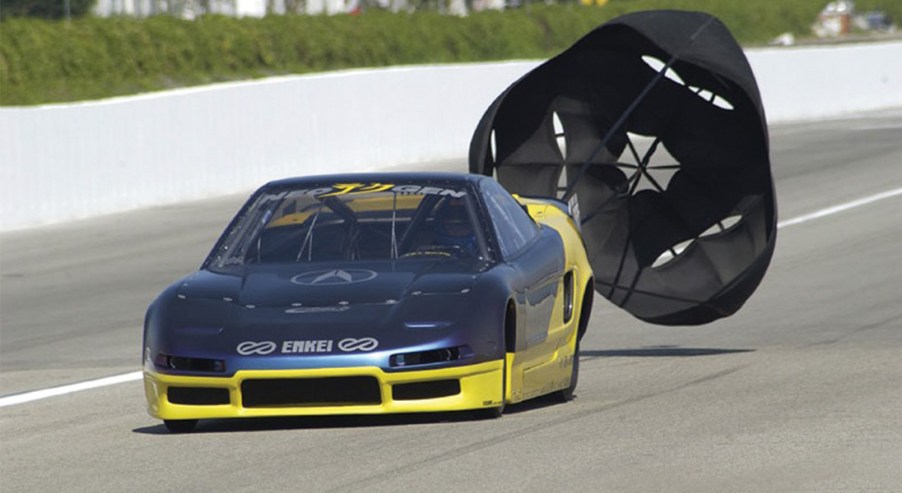
The Fastest Acura NSX in the World Isn’t That Much of an NSX
When you think of the Acura NSX, you probably either picture the first-generation model, which was the epitome of a reliable exotic car that you can drive every day. After all, that’s what Honda meant for it to be when it debuted in 1990. As you can imagine, many enthusiasts have toyed with and tuned the car over the years to make insane amounts of power, but no one compares to Adam Saruwatari, who built the world’s fastest Acura NSX. Although, with all of the modifications, the resulting product wasn’t exactly true-to-form.
Adam Saruwatari’s Acura NSX
Don’t get us wrong, the car still looks like a first-generation Acura NSX, but in true drag race form, it’s more of a shell than an actual car. According to Saruwatari, it’s a “pro-stock-style NSX” that was purpose-built for drag racing. In fact, the outer shell itself is made out of carbon fiber, which was molded from an actual Acura NSX factory shell but stretched out to meet the necessary proportions in fitting the engine, wheels, and other components needed to get the car down the drag strip in the quickest and safest way possible.
Here’s a full walkaround of the car, conducted by Hoonigan:
Simplicity is key on the inside
Looking at the interior of the car, or what’s left of it, you won’t be surprised when your eyes get flooded with aluminum and carbon fiber parts. Of course, each part has its purpose, from the aluminum cladding that shrouds the transmission tunnel to the full carbon fiber dashboard that handily comes out in one, lightweight piece.
There’s no mistaking that the interior is just as purpose-built as the rest of the car. There’s a single Sparco seat for the driver that’s positioned perfectly for Saruwatari, and let’s not forget that there’s a ton of titanium parts abound, which includes the differential housing and roll cage bars. “I love titanium and carbon fiber. When the body gives out and they need start replacing parts with titanium, I’m all good with that,” Saruwatari said.
Why is the engine in the front?
If you’re familiar with the stock Acura NSX, then you’re well aware that the 3.2-liter V6 engine is mounted in the middle of the car, behind the passenger cabin. Not so much on this drag car as Saruwatari had mounted in the front, most likely for weight balancing since it’s a drag car. Also, he explains that the car was built from the ground up, which means that his team did that on purpose, and it wasn’t some kind of weird conversion.

To our surprise, a lot of the 3.2-liter mill used in Saruwatari’s NSX is factory spec. Well, at least the engine crank and cylinder heads are, but of course, the whole thing was reworked with stronger pistons and rods, cylinder head porting, and special camshafts to withstand the massive amounts of boost coming from the two turbochargers. Speaking of the twin snails, Saruwatari says that he’s unfamiliar with the specs and size of the turbos, but from the looks of it, he was more concerned with cooling the setup.
As such, Saruwatari’s team installed two massive air ducts that flow from the front of the car straight to the turbos for more air when the car is in motion. And when the car is not in motion, there is an icebox that feeds ice water to the liquid-to-air intercooler, which in turn helps cool the engine. That’s not too surprising considering the whole setup puts out around 1,366 horsepower and is capable of getting the car down the quarter-mile in just 7 seconds at 197 mph, according to Drag Import News.

This NSX is old news
Anyone that was into the import tuner race scene back in the mid-90s to the early 2000s is all too familiar with Adam Saruwatari and his NSX. He started out by drag racing his legendary Mazda RX-7, which held the record for a stock-chassis, rotary engine car due to its consistent drag runs that stopped clocks at around 9.5 seconds at around 142 mph. It was an impressive feat that made Saruwatari an import drag racing legend and gave way to the fabled NSX you see here.



